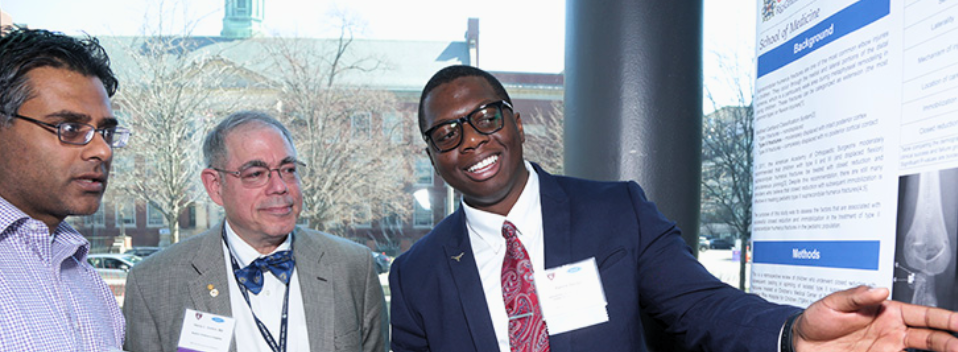
MEDI 9331 Scholarly Activities Clinical Years
Document Type
Conference Proceeding
Publication Date
10-2020
Abstract
Breast cancer is the most common malignancy diagnosed in women aside from nonmelanoma skin cancer; 276,480 new cases of breast cancer are estimated to be diagnosed by the end of 2020.1 An estimated 76% of patients with stage III or IV breast cancer pursue mastectomy as part of their treatment.2 Recent breast reconstruction trends reveal an upsurge in the percentage of patients pursuing breast reconstruction following mastectomy recent studies reveal that 54-63% of women undergoing mastectomy decide to pursue breast reconstruction.3 Breast reconstruction is conventionally considered complete after the restoration of the Nipple-areolar complex (NAC), 71% of patients consider a breast to appear incomplete without NAC reconstruction. A lack of NAC reconstruction has been revealed to negatively impact a patients perception of self; NAC reconstruction can improve psychosocial well-being and aesthetic outcomes. Factors that affect NAC patient satisfaction include nipple and areolar shape, color, and nipple projection.4 Various autologous methods of reconstructing the NAC have previously been described; however, a barrier to successful NAC reconstruction has been loss of nipple projection over time. This study describes a modification of current nipple projection techniques that utilizes autologous de-epithelized rolled dermal tissue from previous or current surgical sites to maintain nipple projection. Perioperative dermal autografts were obtained from patients from areas of current incisions or previous scar formation. For instance, dermal autografts could be obtained from C-section scar revisions, liposuction incisions, or abdominoplasty incisions. Thus, by salvaging tissues that would have otherwise been discarded intraoperatively an autograft can be obtained without adding additional scarring. After determining the donor site, rectangular segments of skin approximately 2 x 8 cm were excised, de-epithelized, and defatted on each side. The inferior aspect of the anticipated nipple skin was then bluntly dissected approximately 40% of the expected circumference. A cavity was then created under the skin at the expected nipple location; the dermal graft was then placed inside the cavity to provide projection and volume to the nipple. This study provides a modification of current techniques for maintenance of nipple projection. This method reduces additional scarring, which could negatively impact patient satisfaction, and does not require the need for a prosthetic device. Overall this modification of technique improves cosmetic results to patients seeking NAC reconstruction.
Recommended Citation
Lopez, A., Nunez, A., & Garza, M. D. L. (2020, October). Modification of Current Techniques: Increasing Nipple Projection in Patients Receiving Nipple-Areolar Complex (NAC) Reconstruction. 89th Annual Plastic Surgery The Meeting 2020. https://scholarworks.utrgv.edu/som9331/5/
Publication Title
89th Annual Plastic Surgery The Meeting 2020
Academic Level
medical student

